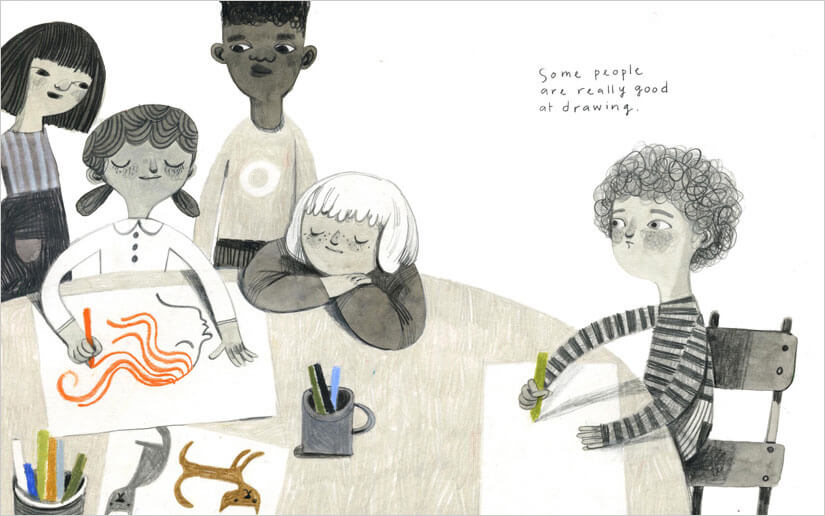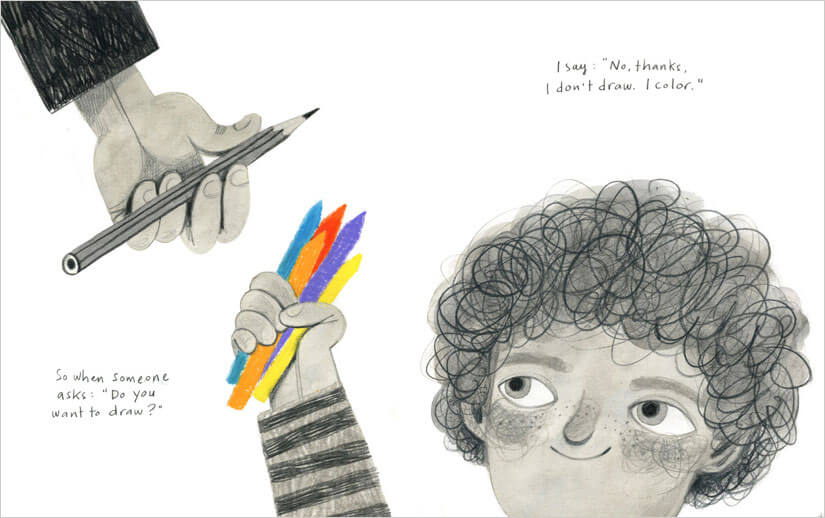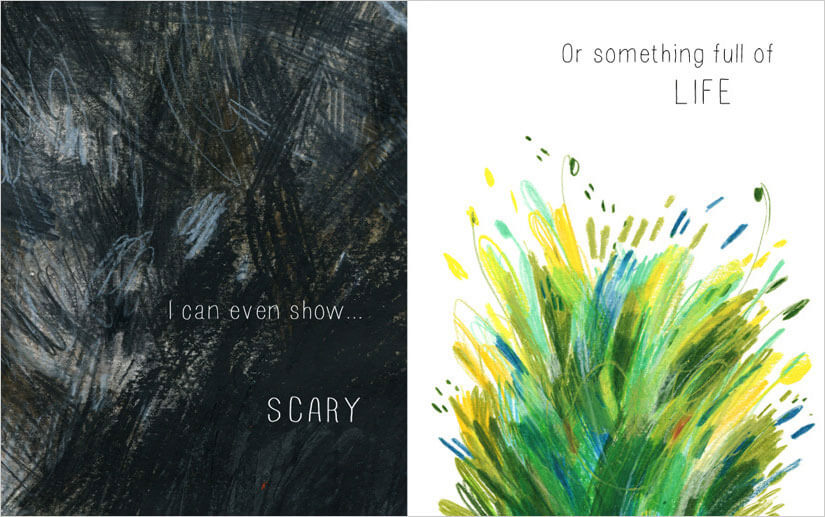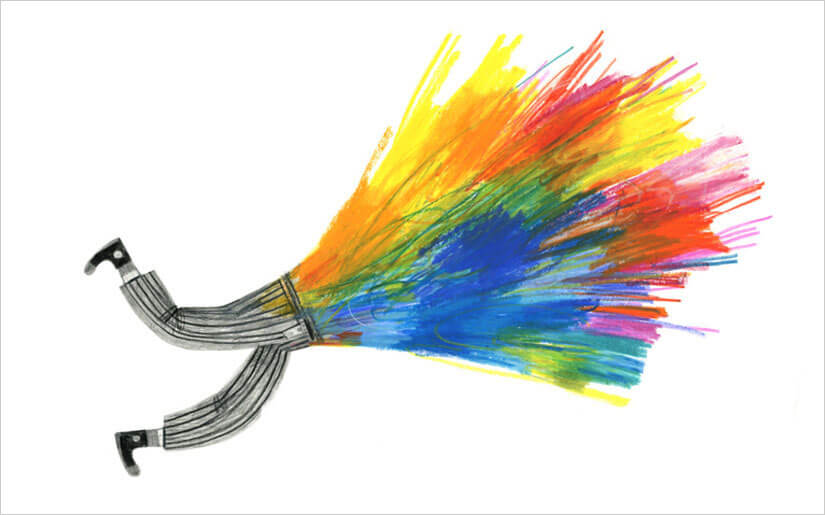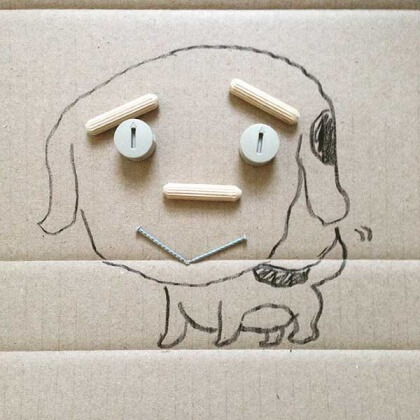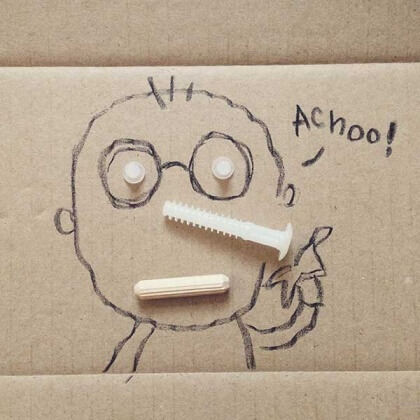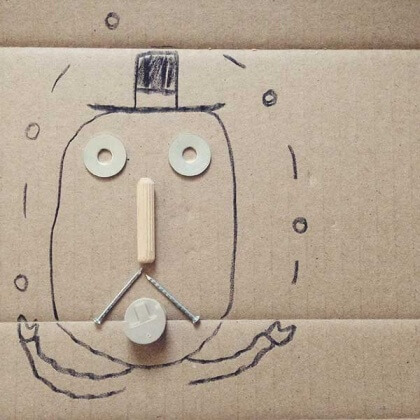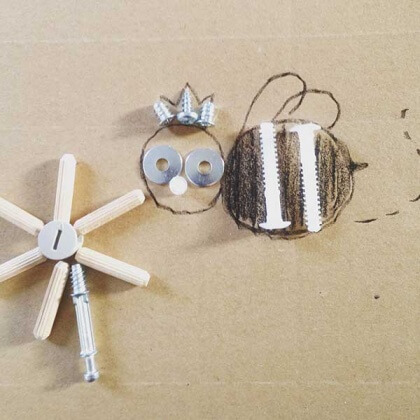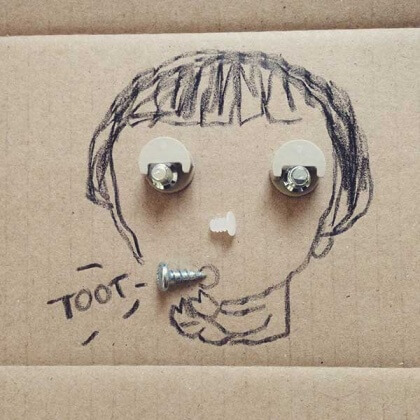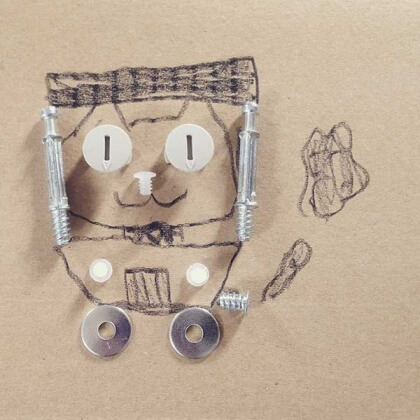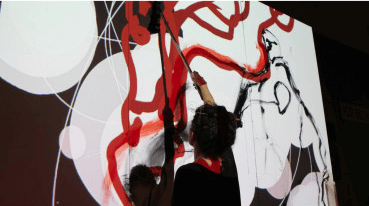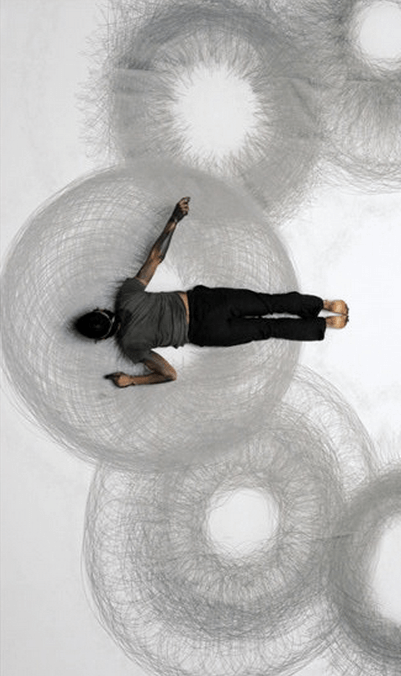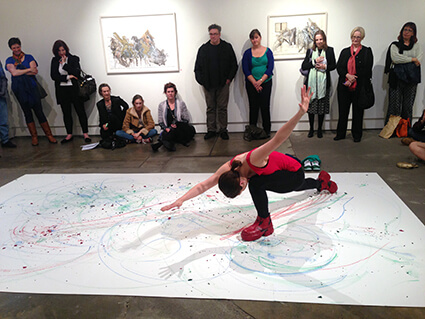Every experienced artist has some tricks up their sleeve. That’s why we decided to ask some of our favorite artists for their top doodle tips. Here’s what we learned.
Doodle Tips
First up is American author and illustrator Matthew Cordell, whose 2019 book, Wolf in the Snow, won the Caldecott Medal. He also made a book called Hello Neighbor! about one of our favorite people, Mr Rogers. Matthew’s latest book is Bear Island.
Tip #1 – Matthew Cordell
Try to doodle everyday, not with a pencil, but with a pen. It’s fun to see what happens, and it sharpens your hand and eye [coordination] when you can’t erase.

Drawing without erasing might seem like commitment, but we dare you to try it! Follow Matthew Cordell on instagram to see his drawings and stay for his awesome bird-watching adventures in his stories.
***
Our second doodle tip is from lifestyle illustrator Nadine Mnemoi, whose last name sounds like the sound you make when you kiss. Nadine prefers to doodle digitally, and often cheers us on with her colorful art featuring women.
View this post on Instagram
Tip #2 – Nadine Mnemoi
To be productive and fast, choose the color palette before coloring.
Limiting your color palette to a few shades can also make your work look more sophisticated, and refined. Which colors would you pick, if you could only use three?
***
Our third expert doodler is Neil Emmanuel, whose experience includes animation and teaching. Neil is currently working on a graphic guide about the Middle Ages. Here’s a preview below.
Neil’s advice is technique-oriented, and involves drawing something people often consider tricky : hands.
Tip #3 – Neil Emmanuel
[When drawing hands] you can exaggerate the little finger gap in a pose to add a bit more life… all fingers together, flat, looks like a marching military hand.
See how Neil adds a bit of space between the pinky and ring fingers in his doodle above? You should try it next time you’re drawing hands, and see if it gives your drawings a bit of a lift.
***
Hope these tips help you with your own drawings. Here’s a bonus doodle tip for you.
Do you have a tip for us? Leave it in the comments below. We’d love to add them to a future installment of our Doodle Tips series. Happy doodling!
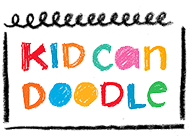



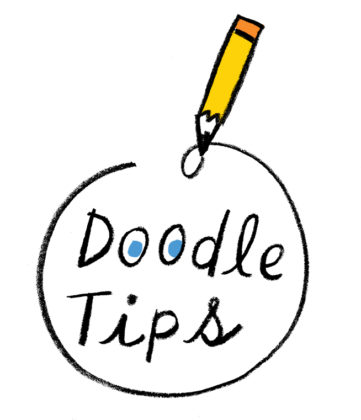



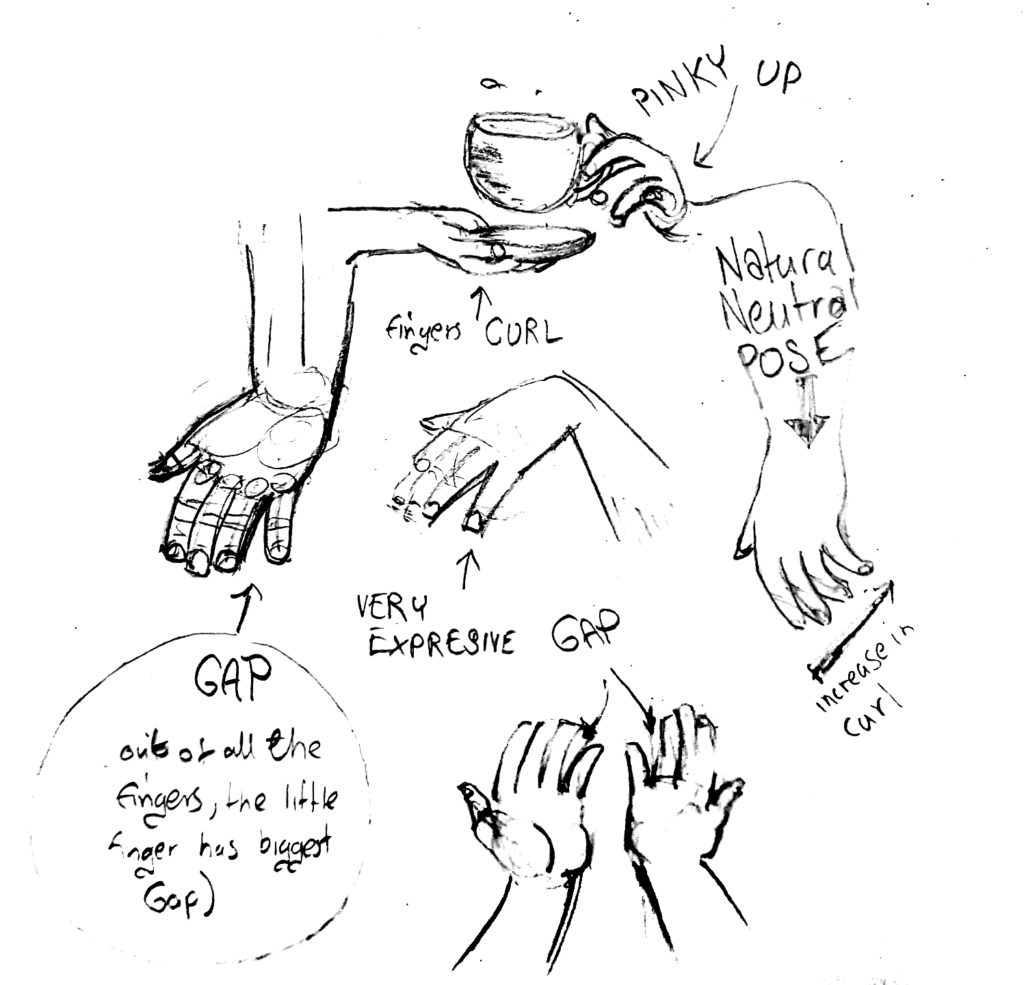









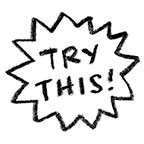 Doodle TIP : Pretend you are tracing your doodle subject with your pencil; follow the outline of your hand model with your eyes while allowing your drawing hand to follow with the pencil on the paper.
Doodle TIP : Pretend you are tracing your doodle subject with your pencil; follow the outline of your hand model with your eyes while allowing your drawing hand to follow with the pencil on the paper.
 Share your doodles with us! Don’t forget to tag them with #kidcandoodle or #startwithascribble
Share your doodles with us! Don’t forget to tag them with #kidcandoodle or #startwithascribble
